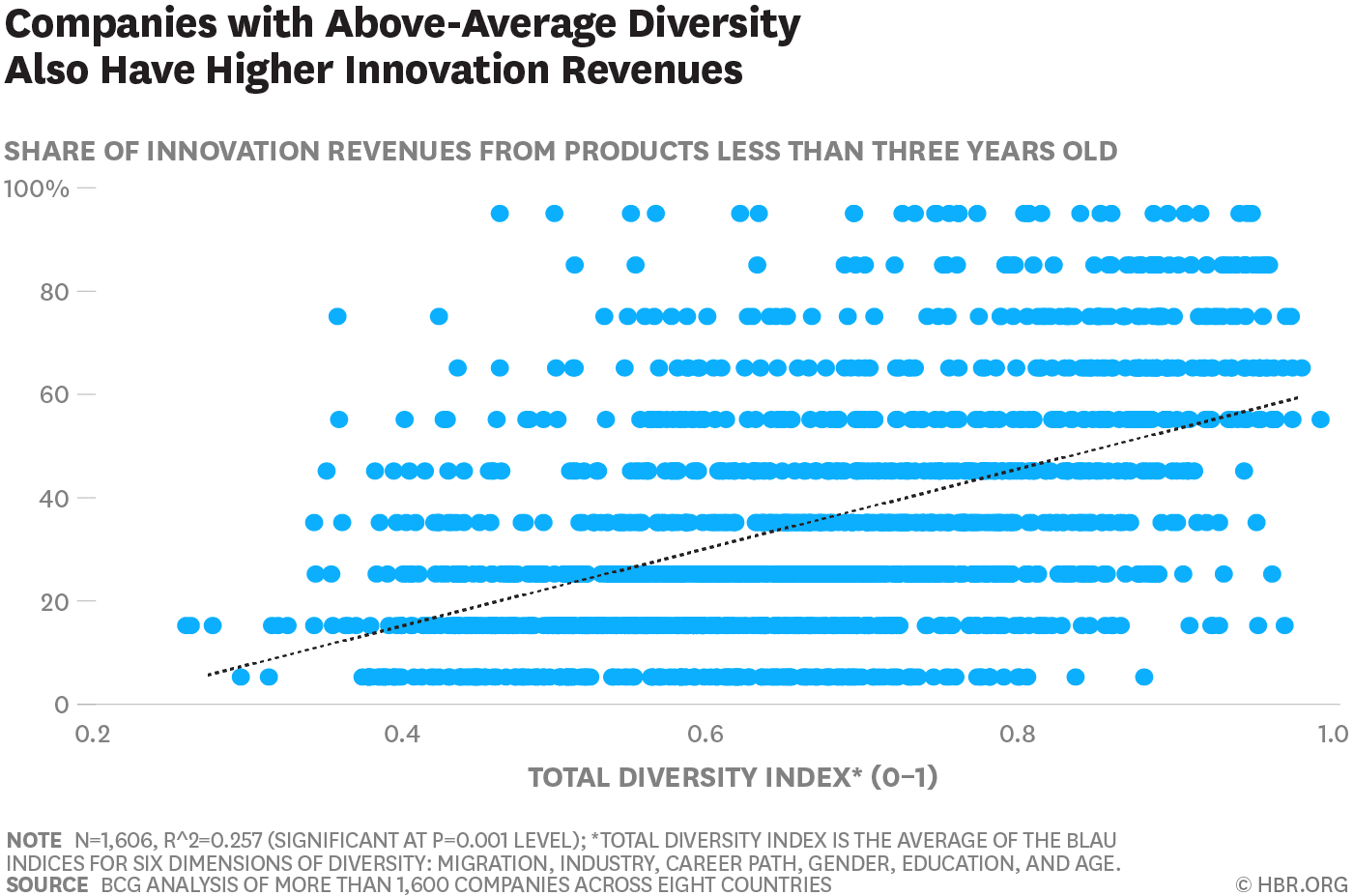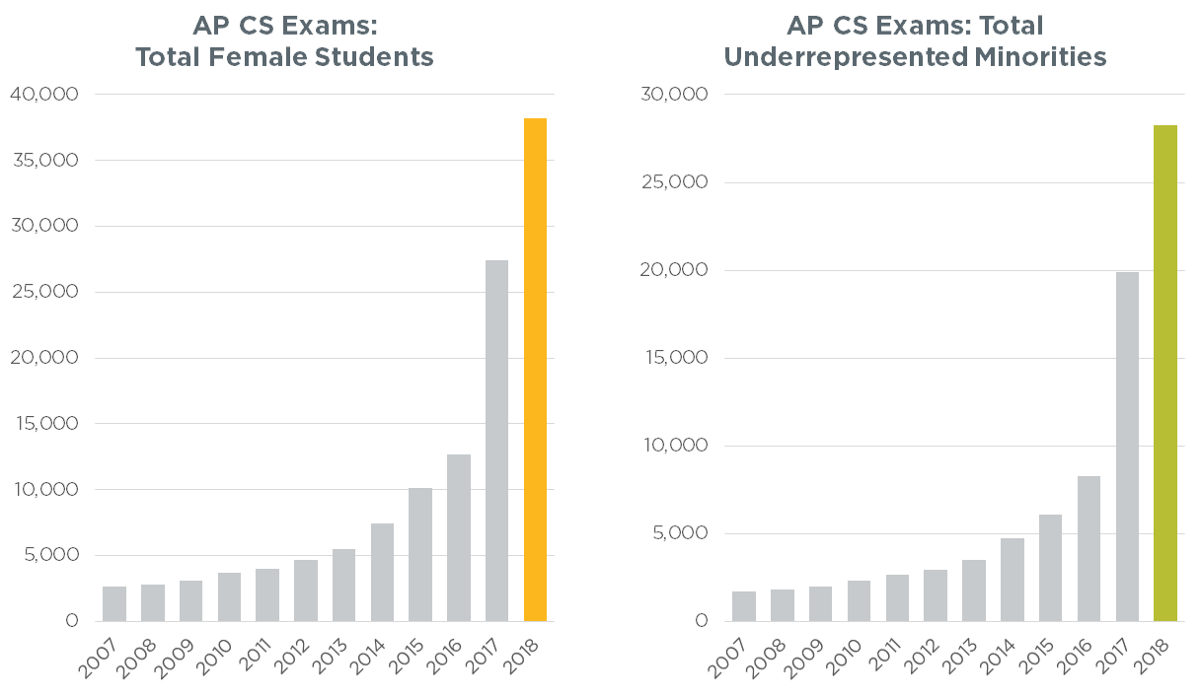Diversity in Software Test: How a Diverse Workforce Impacts Revenue and Software End-User Satisfaction
Diversity shapes our world. As individuals we have different tastes, experiences, strengths, preferences, ideas and dreams. Much like biodiversity benefits the environment, or a diversified portfolio benefits the investor, diversity benefits us as a society — and on a smaller scale, it benefits the workplace.
Workplace diversity is a hot topic, and for good reason. There are multiple studies that show companies with higher rates of diversity have higher earnings. A recent study by the Boston Consulting Group (BCG) found that companies that have more diverse management teams report 19% higher revenues due to innovation. This finding is huge for tech companies, start-ups, and any industry where innovation and effective change management is the key to growth.
The study illustrates that diversity is not just a metric to strive for, it should be an integral part of a successful revenue generating business. Reaping the bottom-line benefit of diversity doesn’t end with diverse leadership, it arises when diversity is practiced at all organizational levels.
What is Diversity?
Diversity is not simply about gender or even ethnicity, although those are the high-level metrics we tend to measure by. Diversity is also about our different abilities, our sexual orientation, our faith, our age, our socioeconomic status and our origins. These factors represent our individual embodied experience and constitute a wealth of skill, knowledge and potential when leveraged by wise companies.

In the workplace, diversity should be more than a metric asking us to hire more of this or that group. Simply hiring more women does not change workplace attitudes or how we value (or devalue) our coworkers. To truly embrace diversity we have to understand, appreciate, and actively engage with our differences. Doing this will allow teams to develop creative solutions and innovative new ideas. Of course, the business world is ruled by numbers, so we turn to numbers to judge whether our organization is diverse enough.
Why is Diversity Important?
Let’s look at areas other than business revenue where diversity has been shown to create long-term health and abundance. For many years now, science has understood the importance of environmental biodiversity. Studies show us that the reintroduction of wolves to Yellowstone Park benefited the entire ecosystem. The inclusion of this single element of diversity is credited with saving multiple species like beaver, deer, fox, and mice, as well as repairing an ecosystem plagued by defoliation, erosion and imbalance — to the point of restoring native river flows. [1] This effect is called a ‘trophic cascade’ and, if indicative of the power of inclusion, we should all want to see a trophic cascade in our organizations
There’s also diversity in investments.The investment that promises year-over-year growth with moderate risk, has always been the diversified stock portfolio. From international to cross-industry representation, we’re better off putting our money into a cross-section of businesses that, in aggregate, are bound to do well. [2]
If diversity reaps such immense benefits for both our investments and our environment, why aren’t we more successful at creating diversity in the workforce?
Maybe you’re a hiring manager, a PM, or a C-level who wants more than ideology to support diversity initiatives? Diversity and Inclusion (D&I) initiatives are all the rage, but what is the evidence to support these initiatives? Don’t worry, I’ve got your back here. Let’s look at some statistics.
The Business Impact of Diversity
- Racially diverse teams outperform non-diverse ones by 35% [3]
- One of the biggest things stopping managers from implementing diversity is the fear that introducing people who ‘are different’ and ‘don’t understand’ each other will hamper productivity.
- A cognitive intelligence study done by MIT researchers found that successful teams had three things in common: they gave one another roughly equal time to talk, they were sensitive towards each other (even in awkward situations), and they included more women. [4]
- In other words, having different types of people on the same team can help us look at problems more carefully while also being more innovative, creative and inclusive about our solutions.
- Ethnically diverse companies are 35% more likely to earn above-average revenue in their industry [5]
- Ethnicity is just one aspect of diversity, albeit an important one. If we used D&I metrics that accounted for more than just ethnicity, metrics that accounted for all the other variable that impact human diversity, what might this percentage grow to be?

Fostering Workplace Diversity
“Fewer large companies are run by women than by men named John”
When a single name outnumbers an entire gender, it reveals a staggering problem.
It’s been argued that correlation doesn’t equal causation (greater gender and ethnic diversity in corporate leadership doesn’t automatically translate into more profit), and this argument is true. If we hire simply to meet a D&I metric without actively engaging in the work of shifting our attitudes and perceptions we’re not being effective at leveraging diversity’s potential.
One example of shifting our perceptions is by using ‘resilient language’, a phrase coined by Ash Coleman, QA engineer and founder of QualityINClusive, a diversity consulting firm. She points out that engaging diversity and inclusion in the workplace often means getting clear with the ways we ideate our biases in response to the type of language used. We infer who is included, and who is excluded, from any given situation through the language used to describe it. Working within the underlying corporate culture to change foundational ideologies is where correlation begins to become causation.
The truth is, the more diverse your company is, the better positioned the company is to win top talent, increase employee satisfaction, and improve customer retention. All of this leads to a cycle of increasing returns. And this cycle suggests that other kinds of diversity — in age, sexual orientation, and experience — are also likely to bring some level of competitive advantage for companies that can attract and retain such diverse talent.
Why Hiring for “Culture Fit” Fails Diversity Initiatives
There’s no shortage of advice on how companies can become more innovative. The catch is that most of that advice is based on anecdotal evidence. But there’s one step companies can take that does have some data behind it. Hire for potential. Hire for skill. Hire for experience. Whatever you do, don’t hire for ‘culture fit’.
Companies often hire candidates based on ‘culture fit’. Whatever the ‘company culture’ is — be it pub nights, spartan races, or a dog-friendly office, the sheer fact of hiring to fit a predefined role is akin to stereotyping. Think of ‘culture-fit’ in another way. By seeking only those candidates who ‘fit’, you’re limiting your resources. When resources are artificially limited by culture-fit constraints, it’s likely you’ll see an employee mix that isn’t really a mix. It’s a somewhat homogeneous blob of people who all like the same things — and likely use very similar processes to solve problems.

It’s not uncommon to see tech recruiting posts that advertise pub and party nights as a ‘perk’ of employment. This innocuous sounding statement, baked into you job posting, sets the stage for some prospective applicants to feel excluded. Perhaps they’re gluten-intolerant, prefer wine, have a family to go home to, are in recovery, or have chosen not to imbibe for one of many other reasons.
Crafting language that describes your company’s persona as a ‘pub culture’ excludes those for whom the ‘pub culture’ paradigm doesn’t fit. Further, use of such language creates a space where those humans who don’t see themselves as a ‘fit’ are likely to eliminate themselves from consideration in the first place. This may well cause your company to miss out on highly qualified and valuable employees.
Benefits of Diversity in Software Test
By bringing together our individual backgrounds, skills, and experiences, businesses are better able to breed the type of innovative and creative solutions needed to succeed in an increasingly competitive economy. Diverse people have diverse ideas and diverse ideas allow us to out-think our competitors, a boon in the fast-paced world of software QA!
In the software world, embracing and leveraging workplace diversity is truly a game changer. Now that user experience (UX) plays a vital role in the success of a piece of software, we want people who can ideate from a broad range of perspectives. Software test is no longer simply ‘data functional’, it’s now ‘people functional’. Software testing should always encompass how real people use products in the real world.
Creating useful and usable interfaces for real people hinges on being able to understand our users and approach user problems creatively. Unless you’re targeting a truly narrow and specialized market, it’s highly unlikely that a homogeneous team will be able to imagine the various embodied experiences of our users without embodying at least some of those experiences, as well.
We can look at the benefits of diversity in QA two ways:
- Diversity enables us to understand and design for our users (increasing adoption rates, and with it, revenue)
- Diversity enables us to hire the best candidate for the role from the largest pool of potential (increasing effectiveness, and with it, revenue).
Diversity combines optimized skill-sets and increased user empathy in a win-win for everyone.
How to Hire Diverse Employees in Technology
The face of the computer science graduate is changing. More women and underrepresented people, especially those who are younger, are entering the tech field and will begin to make up a significant portion of the hiring pool.

The first step in recruiting for diversity is opening the door to underrepresented applicants. However, there’s more to consider. Following are some ways we can ensure applicants aren’t just another metric to tick off our ‘interview diversity’ checklist:
Check Your Recruiters’ Unconscious Bias
- Unconscious bias might feel like a buzz phrase these days, but it’s real. Bias starts with a name on a resume. Make sure you give equal consideration to John Smith, Jane Smith, Juan Rodriguez, Kanisha Browne, Samir Nasri and Mi-Ling Chan.
Establish A Clear Organizational Commitment
- Have a clearly written organizational commitment to diversity and share that commitment both internally and externally, then make sure operational practices align with your commitment.
Leverage Your Internal Networks
- Organize employee resource groups (ERGs) that leverage their expertise to serve on hiring panels, involve them in talent management activities and create opportunity for them to interact with the executive team.
Walk the Talk
- If you want a diverse workforce, you want a diverse sourcing strategy. Look for diverse sourcing strategies such as college recruiting, community associations, social media platforms, and industry specific groups.
Make Diversity a Part of Every Hiring Conversation
- Does your benefits plan cover same-sex marriages? Share that! Let you applicants know any ways you advocate for social causes that advance diversity.
Set Direction and Parameters for Talent Needs
- HR leaders can increase diversity of talent by setting the direction, parameters and constraints of hiring needs. What missing variables can improve a cross-functional team?
For more information on hiring challenges in the technology industry check out our recent blog post on hiring for potential.
[1] Staff, “Wolf Reintroduction Changes Ecosystem,” My Yellowstone Park, 21-Jun-2011. [Online]. Available:https://www.yellowstonepark.com/things-to-do/wolf-reintroduction-changes-ecosystem. [Accessed:18-Oct-2018]
[2] S. Moore, “How Much Diversification Is Enough?,” Forbes, 12-May-2018. [Online]. Available: https://www.forbes.com/sites/simonmoore/2018/05/10/how-much-diversification-is-enough/#6178afd66eac. [Accessed: 18-Oct-2018].
[3] J. Wolfers, “Fewer Women Run Big Companies Than Men Named John,” The New York Times, 02-Mar-2015. [Online]. Available: https://www.nytimes.com/2015/03/03/upshot/fewer-women-run-big-companies-than-men-named-john.html?_r=0&abt=0002&abg=0. [Accessed: 18-Oct-2018].
[4] R. Tulshyan, “Racially Diverse Companies Outperform Industry Norms by 35%,” Forbes, 13-Feb-2015. [Online]. Available: https://www.forbes.com/sites/ruchikatulshyan/2015/01/30/racially-diverse-companies-outperform-industry-norms-by-30/#850fcf113263. [Accessed: 18-Oct-2018].
[5] “The secret ingredient that makes some teams better than others,” ideas.ted.com, 07-Dec-2015. [Online]. Available: https://ideas.ted.com/the-secret-ingredient-that-makes-some-teams-better-than-others/. [Accessed: 18-Oct-2018].
